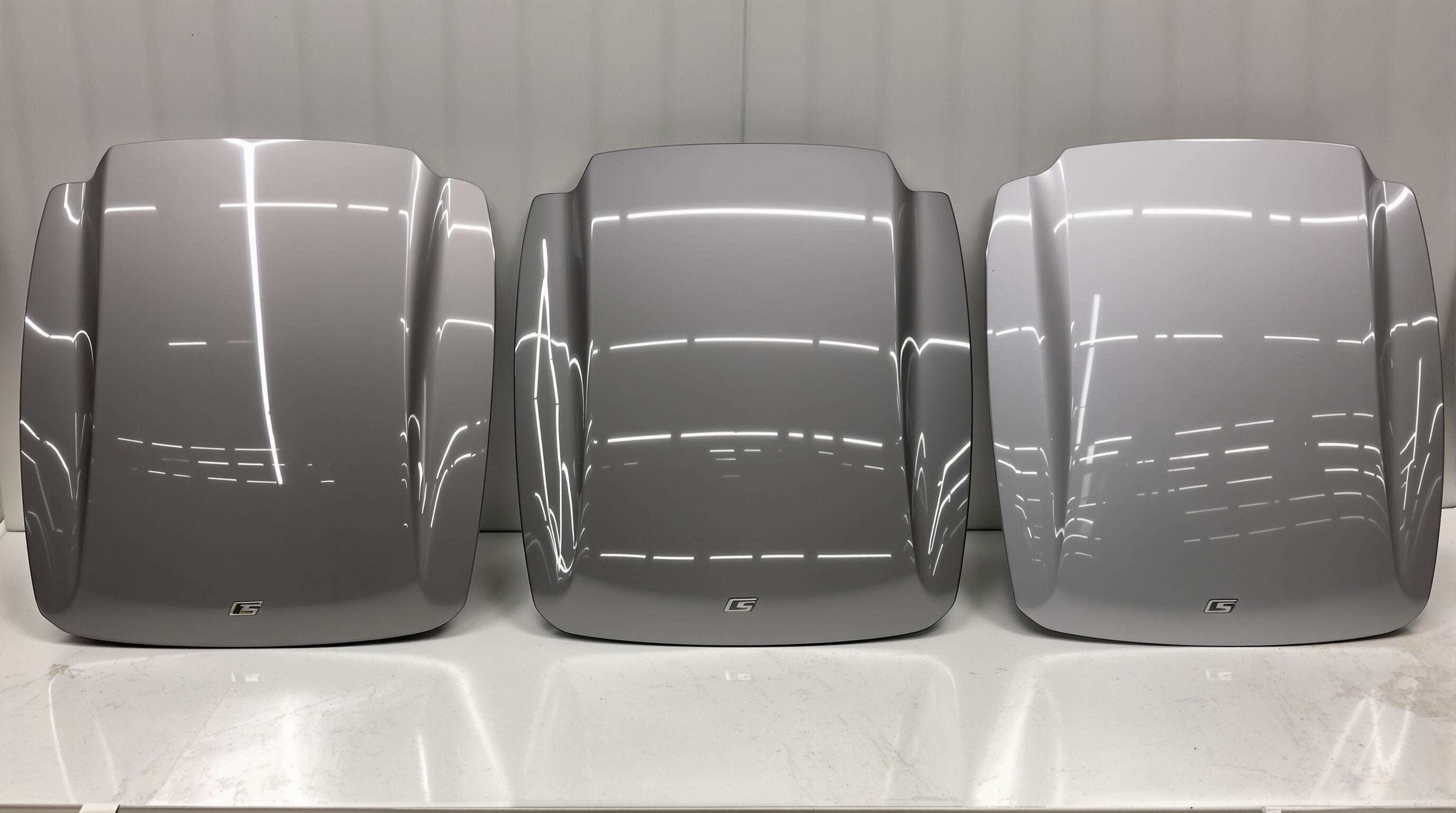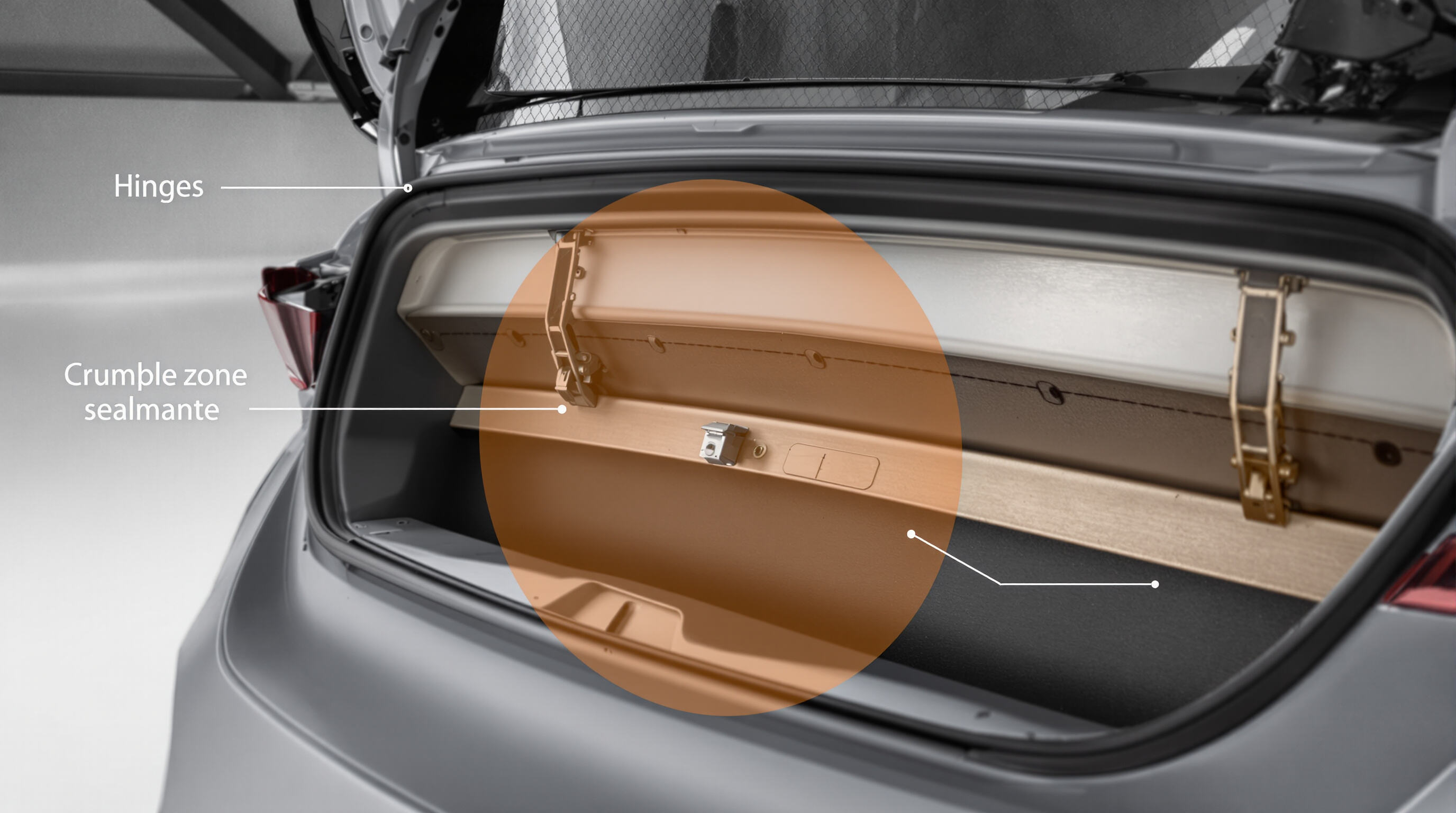The trunk lid on a car isn't simply where people put their stuff. It actually helps keep the back end of the vehicle strong and protects whatever's inside from rain, snow, or someone trying to steal it. These days, most trunks come with built-in parts that work together - things like sensors that detect impacts, lights that turn on automatically when opened, and seals that keep water out. All this tech makes rides quieter inside and helps maintain better airflow around the car. When manufacturers get the trunk lined up just right with those side panels and the bumper at the back, it looks balanced and symmetrical. This matters because cars that look good tend to hold their value longer, plus they perform better overall when everything fits properly.
When car manufacturers get serious about trunk lid design, they're actually cutting down on air resistance by around 12%, which means better gas mileage when driving on the highway. A recent study from last year showed that just tweaking those back panels can boost fuel efficiency anywhere between 2 to 4 percent on long road trips. What makes these designs work? Well, there's the smooth edges that don't create so much wind disturbance, then there are those little spoilers built right in to keep air flowing properly without separating too much. And let's not forget about the lighter weight materials used these days that still hold their shape even after years of use. All these elements together help cars keep performing close to what the EPA originally rated them for, right from the first tank of gas all the way through to when someone finally trades them in.
Trunk lids work in concert with surrounding components to ensure both safety and performance:
This integration prevents misalignment that could increase wind resistance by 15% and compromise critical safety systems like rearview cameras and sensor arrays.

Most car trunks still rely on stamped steel these days, though manufacturers are starting to experiment with other materials too. Steel stays popular because it can handle a lot of force before breaking (around 280 to 550 MPa tensile strength) and doesn't break the bank at about 30 to 50 cents per pound. Aluminum is gaining ground though, cutting down around half the weight compared to steel without sacrificing much rigidity. That's why we see more aluminum trunks in cars where fuel economy matters most. Polymer composites offer good protection against rust, but they just don't stand up well to dents and scratches. For this reason, they mostly end up as parts for less visible areas rather than main body panels on production cars.
As emissions rules get stricter, car manufacturers are turning to aluminum for trunk lids because they cut down on vehicle weight somewhere around 60 to 80 pounds. That kind of reduction actually makes cars about 2 to 3 percent more fuel efficient according to research from SAE International back in 2023. When we look at electric vehicles specifically, losing all that extra weight means drivers can go approximately 5 to 7 additional miles on each charge cycle, something confirmed by studies at Argonne National Lab in 2024. So what does this mean? Aluminum isn't just helping cars pollute less now it's becoming essential for making future electric vehicles work better overall.
Premium trunk lids are increasingly made from high strength steel (HSS) these days because it has yield strengths above 700 MPa. The material cuts down on weight by about 20% when compared to regular steel options, yet still manages to boost impact resistance by around 40%. This means cars can handle crashes better without taking away valuable storage room behind the rear seats. When tested under salt spray conditions, zinc coated versions last through roughly 1200 hours before showing signs of corrosion, which is actually double what we see with plain HSS according to data from AutoSteel Alliance back in 2023. That kind of durability makes all the difference for vehicles driven in coastal areas or regions where road salt gets used heavily during winter months.
What materials go into making a trunk lid makes all the difference when it comes to how long it lasts and what kind of upkeep it needs. Aluminum stands out because it can handle road salt and moisture about five times better than regular steel, which means car owners living near the coast might save anywhere from two hundred to three hundred dollars each year on repairs according to research from NACE International back in 2023. On the flip side, those plastic composite materials tend to break down when exposed to sunlight for extended periods. After just five years outside, these plastics usually show around 15 to 20 percent warping across their surface area. That's why we don't see them used much for main body panels even though they're lighter than metal options.

A car's trunk lid plays a major role in how stiff the whole body remains when twisting forces are applied. Studies from 2020 by Kim and colleagues found that about 18 percent of a vehicle's overall chassis rigidity actually comes from this part. Car manufacturers design these lids specifically so they hold up during crashes at the back of the vehicle. When something goes wrong with the trunk lid, even small problems like hinges getting out of alignment or rust starting to form can mess up how forces travel through the car structure. This compromises those safety features built right into modern vehicles which are meant to soak up impact energy during collisions.
Research from the IIHS in 2023 showed something interesting about car safety. When a trunk lid gets misaligned by more than 3mm after a collision, it cuts down on how well the rear crumple zone works by around a quarter. What happens next? The forces aren't distributed evenly during crashes, which puts people inside at greater risk. There's another problem too. Damaged seals often can't hold things in place when there's a rollover accident. Think about spare tires bouncing around. These kinds of situations account for about 12% of deaths related to cargo shifting. That makes it pretty clear why getting those trunk lids back into proper alignment matters so much after repair work.
Damaged or improperly repaired trunk lids impair three core safety functions:
Vehicles with substandard trunk lid repairs show a 40% higher likelihood of rear firewall failure in 35 mph crash tests compared to factory specifications. For optimal protection, post-repair inspections should confirm OEM-level alignment and latch functionality.
The trunk lid is basically what makes a car's back end look the way it does, and it plays a big role in showing off what brand it belongs to. When there's a big lip sticking out, people tend to think it looks sporty. But those flat, seamless designs? Those usually scream luxury and class. Just imagine driving away from the dealership only to find some tiny gap between panels or a finish that doesn't quite match up. It really throws off the whole look. And we're not just talking about aesthetics here. The 2023 JD Power study found that almost a third of folks who bought new cars noticed these kinds of alignment issues within their first month behind the wheel. That goes to show how important getting everything just right actually is for customers when they form opinions about quality.
Car makers keep things really tight when it comes to the gap between the trunk lid and other body panels, usually within half a millimeter or so. This attention to detail makes sure everything looks smooth and clean while also cutting down on annoying wind noise during highway drives and helping cars cut through air more efficiently. For paint jobs, manufacturers rely on advanced color measuring tools to match finishes exactly across all those different metal surfaces. According to industry numbers, around two thirds of money spent fixing rear end collisions actually goes toward fixing up trunk lid alignment problems. That tells us something about how important getting those measurements right is from day one, both for factory production lines and for body shops dealing with accident damage later on.
Car manufacturers are increasingly turning to carbon fiber reinforced polymers (CFRPs) when designing trunk lids for upcoming models. The material can cut vehicle weight by around 40% compared to traditional steel according to research from Auto Materials Journal last year. Despite being lighter, these composite materials still hold their structural integrity and allow designers to create those sleek, aerodynamic shapes that were previously impossible with metal. Another big plus is that CFRPs don't rust or wear out over time like conventional materials do. This makes them ideal for improving fuel efficiency and giving engineers more freedom to experiment with vehicle designs, especially important as the automotive industry shifts toward performance cars and electric vehicles where every gram counts.
Trunk lids these days come equipped with touchless opening features that respond to motion sensors, plus they work alongside active aerodynamic systems. The adaptive spoilers built right into the lid will change position when hitting highway speeds, cutting down drag somewhere between 12% to 18% according to research from Aerodynamics Research Group back in 2024. What makes these systems really interesting is how they connect with advanced driver assistance systems. They actually adjust airflow depending on factors like vehicle speed, cargo weight, and road conditions. This helps improve both fuel efficiency and overall stability while driving, especially during those longer trips where every bit counts.
Modular trunk lid assemblies with snap-in components cut repair costs by 35% (Collision Industry Research 2023) by allowing localized replacements instead of full-panel swaps. Standardized mounting interfaces also simplify disassembly, supporting recycling initiatives aimed at reducing auto body waste by 30% before 2030 aligning with global sustainability targets.
When it comes to fixing aluminum trunk lids that sit on steel body structures, regular repair methods just won't cut it because of something called galvanic corrosion. The right approach involves special isolation tools along with epoxy primers that meet current industry specs like those from IARA back in 2024. Car owners need to check if their chosen repair shop actually has people qualified to handle aluminum repairs properly. Bad welding jobs or careless dent removal can really shorten the life of these components and even create safety issues down the road. Getting this right matters for both longevity and driver protection.
The trunk lid contributes to reducing air resistance and improving fuel efficiency by approximately 12% through thoughtful design tweaks such as smooth edges and integrated spoilers.
Aluminum trunk lids are favored due to their lightweight nature, which reduces vehicle weight by 60 to 80 pounds, leading to improved fuel efficiency and enhanced performance in electric vehicles.
Trunk lids are commonly made from steel, aluminum, and polymer composites, each offering benefits like strength, weight reduction, and resistance to corrosion.
Properly aligned trunk lids are crucial for maintaining collision load-path integrity, crumple zone coordination, and cabin sealing, all important for protecting occupants during crashes.